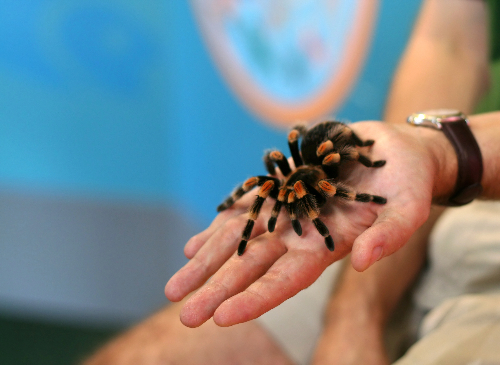Have you ever wondered how often tarantulas molt? These fascinating creatures can capture anyone’s interest with their unique appearance and habits, but understanding their molting process is important for keeping them healthy. We’re about to dive into the topic and discover how often tarantulas shed their old skin, offering insights into responsible tarantula care.
Whether you’re an experienced tarantula keeper or just curious about these eight-legged wonders, join us on this journey to uncover the secret of tarantula molting. Remember, for personalized advice or to schedule an appointment for your pet, feel free to call us at (303) 469-5363.
Why Do Tarantulas Molt?
Molting is a natural process for tarantulas, crucial for their growth and health. But what exactly is it?
The Process of Tarantula Molting
Molting is the process through which a tarantula sheds its exoskeleton to grow. As tarantulas get bigger, their old exoskeleton becomes too tight, prompting the need to molt. This process is fascinating and complex, involving the tarantula developing a new, larger exoskeleton beneath the old one. When ready, the tarantula emerges from the old exoskeleton, revealing a softer and initially more vulnerable exterior.
Signs Your Tarantula is Preparing to Molt
Before a molt, you might notice changes in your tarantula’s behavior and appearance. They may become less active, stop eating, or even change color slightly. These signs indicate it’s time to prepare for the molting process.
Frequency of Molting in Tarantulas
Understanding how often tarantulas molt can help pet owners provide the best care during these critical times. The frequency of molting varies depending on the tarantula’s age and species.
Young tarantulas, still growing, molt more frequently – sometimes several times a year. However, as they reach maturity, the frequency decreases.
Important Molting Facts
- Tarantulas molt upside down: When a tarantula molts, it undergoes a process called ecdysis, during which it sheds its old exoskeleton and forms a new one. Tarantulas typically molt upside down, meaning they flip over onto their backs during this process. Many people who see a tarantula molting in this position may mistake it for being dead or in distress, but it’s actually a natural part of the molting process. It’s crucial to recognize this behavior to avoid unnecessary interference or panic when observing a molting tarantula.
- Do not touch or move a tarantula during or right after a molt: During and immediately after a molt, tarantulas are extremely vulnerable and fragile. Their new exoskeleton is soft and not yet fully hardened, making them susceptible to injury. If you touch or disturb a tarantula at this stage, you could harm it or disrupt the molting process, which may lead to serious health issues or even death for the tarantula. It’s best to leave the tarantula alone during this time and let it recover in peace.
- Adult males will not molt again: Unlike juvenile and female tarantulas, adult male tarantulas typically do not molt again once they reach maturity. Instead, they have a limited lifespan after maturation, which is often focused on breeding. After a male tarantula matures, its primary goal is to find a female and mate. Once this is accomplished, the male’s lifespan is relatively short, and it will eventually die. This is in contrast to female tarantulas, which can continue to molt throughout their lives, growing larger and potentially living longer than their male counterparts.
Post-Molting Care and Observation
After molting, your tarantula’s new exoskeleton will be soft and sensitive. During this time, it’s crucial to ensure a stress-free environment. Avoid handling your tarantula and ensure their habitat has optimal humidity and temperature. Also, hold off on feeding until they’ve had time to harden their new exoskeleton. This process can take a few days.
Navigating a Tarantula’s Molting Cycle
Molting is a fascinating and crucial part of a tarantula’s life. By understanding this process and knowing what to expect, you can provide the best care for your arachnid pet. If you have any concerns or questions about your tarantula’s health or molting habits, don’t hesitate to reach out to us at Laurel Veterinary Clinic. We’re here to support you and your pet’s health journey. Call us at (303) 469-5363 to schedule an appointment or to get more information. Remember, this blog is meant to provide general guidance, but nothing replaces professional veterinary advice tailored to your pet’s specific needs.





